Maurice Agius was just 18 years old when the Second World War broke out. Like so many other youths of his age, he joined the army and fought to defend his country during this global conflict. Today, Major Maurice Agius is 97 years old and is one of the very few remaining Maltese war veterans. Despite his age however, he still holds a certain wit and sharpness as he talks and vividly reminisces about his time during the war.
Maurice joined the military when he was 18, in June 1939, when he enlisted with the Territorials. This was a couple of months before Adolf Hitler’s Germany invaded Poland on 1 September and hence kick-started the global conflict. At the time, Maurice explains, he was attending the then Royal University of Malta and that he used to go wearing his army uniform.
However, when October came along, the summer uniform proved to be inadequate for keeping the cold out and as a result he had to call in for a winter uniform. When he phoned in, he was told that he had to either go back to the army or leave totally. His father was ‘very cross’ as he had joined the army without telling him, and as a result he had to take his leave from the army.
He would remain out of the army until Italy declared war on France and Great Britain on 10 June 1940. The day after Maurice was due to sit for his annual exams, but instead he and the rest of the students were called into the Aula Magna by the rector, Professor Robert Victor Galea, and told that since they were in a situation of war the University had to close. On the same day, Maurice was back with his old unit, with the same service number; ‘it was like I hadn’t left at all’.
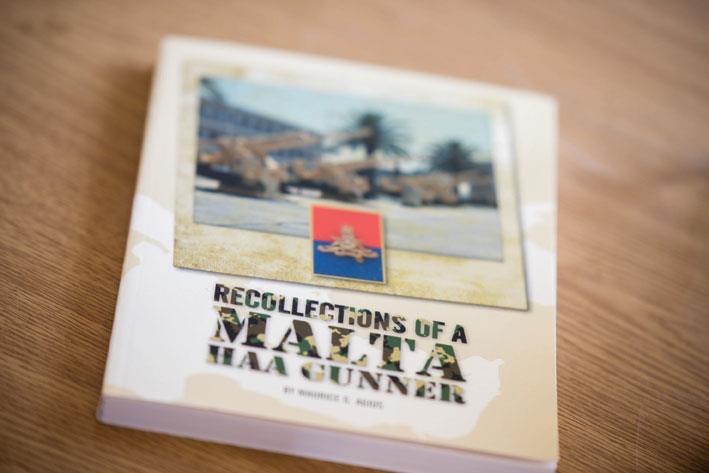
Major Agius formed part of the Royal Malta Artillery within the 2nd Heavy Anti-Aircraft Regiment for the duration of the siege of Malta, and served at gun posts ranging from Benghajsa, Tigne, Ghajn Tuffieha, Dwejra near Rabat, and Bezbizija in the limits of Mosta. These gun posts were invariably always in the thick of the war-time action, with Malta being besieged daily by Axis bombings and becoming the most bombed piece of land on the planet.
By April 1942, Adolf Hitler’s strategy of bombing the island into submission seemed to be working. German supply lines to North Africa were practically untouched by Malta-based aircraft and submarines, and Field Marshall Albert Kesserling, who co-ordinated the bombardment, reported to his Fuhrer that ‘there is nothing left to bomb’. At one point during the month, there were only 17 Spitfires left to defend the island.
By May however, the situation had begun to turn. Mass British air reinforcements meant that the island had 5 full squadrons of Spitfires to call upon, and they managed to wrest control of Malta’s airspace from the Axis forces. Spitfires however have notoriously short range, and this meant that they were unable to fully protect the supply routes to Malta. Convoys aimed at the island had low degrees of success; Operation Harpoon for instance saw only 2 out of 6 merchant ships reach the island from Gibraltar, whilst Operation Vigorous was forced to turn back to Alexandria entirely.
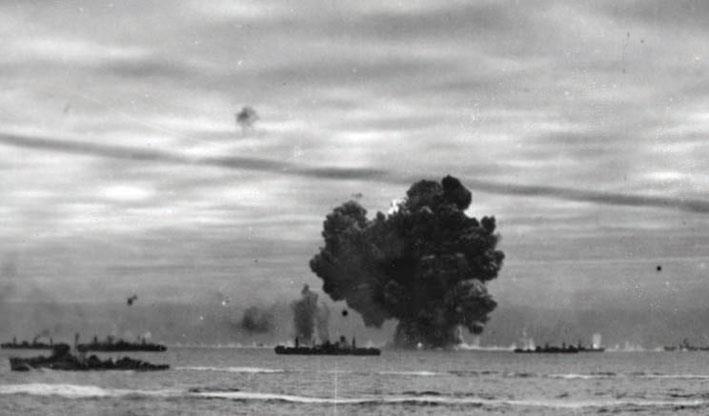
An unidentified ship explodes during Operation Pedestal
As a result, supplies were dwindling. The average Maltese worker was consuming just 1,500 calories a day – by comparison, the consumption of an average worker in Britain never went under the 2,800 calorie mark at any point during the war. One could live with such a calorie intake; but it would lead to rapid weight loss and fatigue. Maurice in fact tells me of how he used to be at the army’s cookhouse and would see soldiers with a weighing scale near them so that they could make sure that the solitary slice of bread that would have to serve them the day was of the correct weight and that they weren’t being short-changed with their ration.
Medicine was also in extremely low supply; to the point that when RAF pilots fell sick, they were given a choice of medicine from either a blue, green, or brown bottle – all of which were filled with water as opposed to medicine (in psychology this is called the Placebo Effect). Fuel supplies were also dwindling. The local Air Commander – Air Vice-Marshal Keith Park – warned that there was only a few weeks supply left; and whilst minesweepers such as HMS Welshman and submarines were converted to transport fuel to the island; it was not enough.
The British knew that if Malta was lost, it would prove disastrous for Britain’s war efforts both on the North African front and as a whole. Efforts, such as Operation Harpoon and Vigorous, to resupply the island however had thus far ended in failure. The Admiralty knew of the importance of Malta and hastened to put together one last ditch attempt – a huge convoy with an unprecedented number of escort ships that would carry vital supplies to the island – a convoy that would be known as Operation Pedestal.
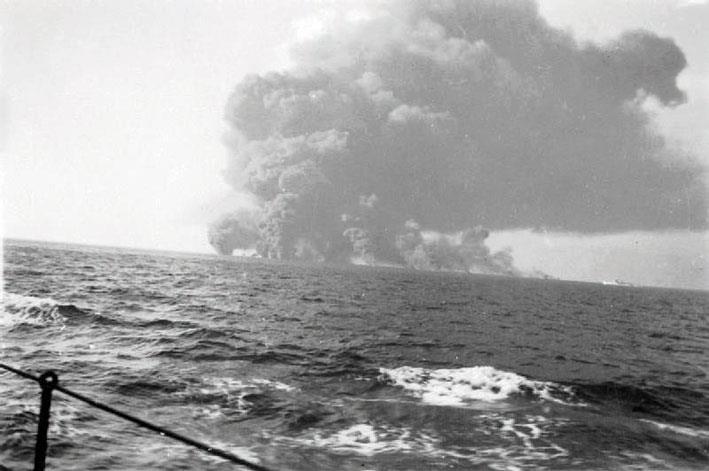
The merchant ship SS Waimarama explodes after being bombed on 13 August.
There was a sense of trepidation in the Maltese air; people knew of the convoy and knew of its importance. As Maurice recounts however, they also knew that ‘it was having a rough time’. Indeed it was; the aircraft carrier HMS Eagle had been lost in Gibraltar with 234 of its crew and all but four of its Hurricane aircraft (the four that weren’t lost were in the air at the time), two cruisers and a destroyer were also sunk, as were, more importantly, nine merchant ships. Amongst them was the Waimarama which was carrying ammunition when it sustained a direct hit and dramatically exploded as a result.
One key ship survived however; the SS Ohio. The huge American tanker was carrying valuable oil supplies, but it had been severely hit. In fact the ship had caught fire, had a dive bomber crash into it and be hit by a torpedo leaving a 7x7 metre hole in the hull. Its arrival was however imperative for the island, as was the arrival of the remaining merchant ships; Port Chalmers, Rochester Castle, Melbourne Star and the Brisbane Star.
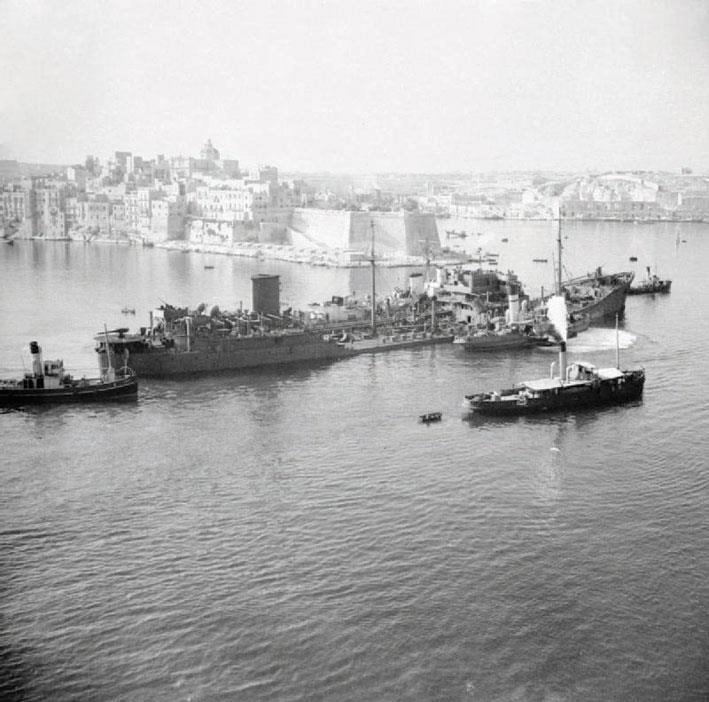
SS Ohio enters Grand Harbour on 15 August 1942
Major Agius did not actually see these ships arriving, as he was situated on the guns at the time. Indeed, he and his regiment knew something important was in the offing and were on high alert. They were expecting the enemy to bomb the ships in harbour – but they didn’t; ‘they must have had enough of us’, Maurice chuckles. He describes to me the jubilation as the ships arrived; the Royal Malta Artillery band greeted them from the bastions of St. Elmo and, after the unloading of the five ships was complete, the merchant navy officers were entertained by the government at what was left of the Casino Maltese. He also recalls how the crews were taken around the island, and that they had come to visit his gun post as there was supposedly the largest crater – almost 20 feet deep – on the island.
With the arrival of the five merchant ships, Malta got an extra 30,000 tonnes of supplies – a number which equated to an extra 10 weeks of supply. Those supplies helped revitalise the island, and helped it beat back the blitz and go onto the offensive. It effectively ended a blitz which had been ongoing for almost two years. Every person who survived the blitz has their own, incredible tales of survival, be it through bravery, courage or simply blind luck. Major Agius is no different.
He recalls being on leave in Valletta in January 1941 waiting for the bus to take him back to his post in Benghajsa, when the air raid siren sounded. Since he knew the bus wouldn’t leave until the raid ended, he walked from the terminus at Castille to where today there is the Central Bank of Malta to witness the raid. What he witnessed was the largest and most violent air raid of the war up to that point, as dive bombers struck the dry-docks where the famous aircraft carrier HMS Illustrious was in for repairs.
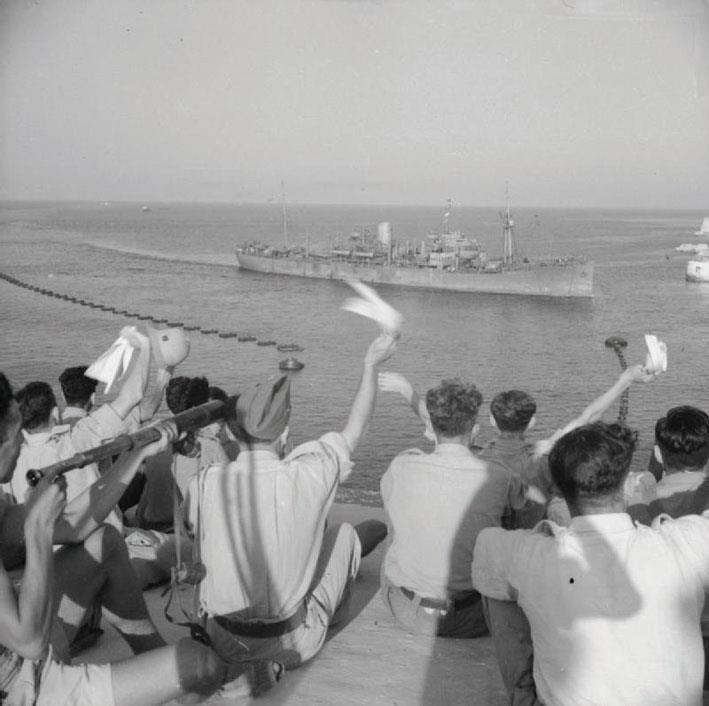
Port Chalmers entering the Grand Harbour
He describes to me the firing of the barrage guns from the ground in defence, and the sheer scale of this raid. The intensity of the attack was nothing like Malta had seen, because it was the first one conducted by the German Luftwaffe and not Italy’s Regia Aeronautica. Despite this and subsequent attacks however, repairs on the stricken ship continued to the point that it slipped out of Grand Harbour eight days after the first raid, on 23 January, to Alexandria and later the United States for full repairs.
By far the most chilling story however, is when on one occasion, Maurice was asked by his fellow officer is they could swap shifts, giving Maurice a shift throughout the night. Maurice obliged, and held command of the gun post throughout the night as an air raid raged overhead. At 4am, it was standard procedure for all aside from a spotter and the duty guard at the entrance to stand down and get four hours of sleep. Since Maurice was in command at the time, he slept in the command room as opposed to in his bed.
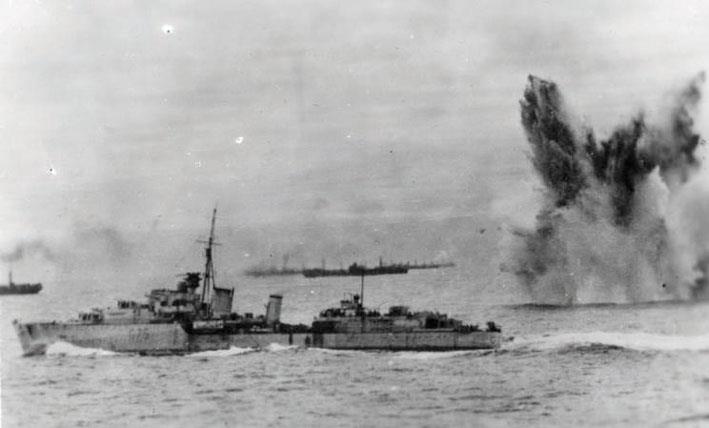
HMS Eskimo G-75 under aerial attack during Operation Pedestal
Twenty minutes later, the spotter awoke him – exclaiming ‘Dawn vicin kienu sinjur!’ (These were close, sir!). Maurice explains simply that he asked the spotter whether the gun post had been hit, and when the reply came back to him in the negative, he went back to sleep. It was only towards 7am that he was awoken by someone telling him that a bomb had fallen and landed right onto his bed in the officer’s quarters. Maurice explains what he thought had happened, saying that the bomb had gone through the corrugated iron roof, landed on his best trousers which had been laid out on his bed to retain the crease, hit the springs of the bed which instead of giving way bounced the bed up against the wall with the bomb still on it. The bomb slid down against the wall, wrapped itself in a blanket and landed near his box of treasures and remained there ticking away for the rest of the night.
Maurice retrieved his shaving stuff from the box, and advised his superiors that the Royal Army Ordinance Corps was needed to remove an unexploded bomb. When he went back, he found that his colleague was standing much too close to the room to be safe in the case that the bomb went off. He walked down the corridor towards him, telling his colleague to move to a safe distance. Not a second had passed from when he walked past the open door of his room that the bomb went off. Miraculously, he came out unscathed. Had the bomb gone off a second earlier, it’s likely that he wouldn’t have survived the blast. ‘I was very lucky’, Maurice nods.
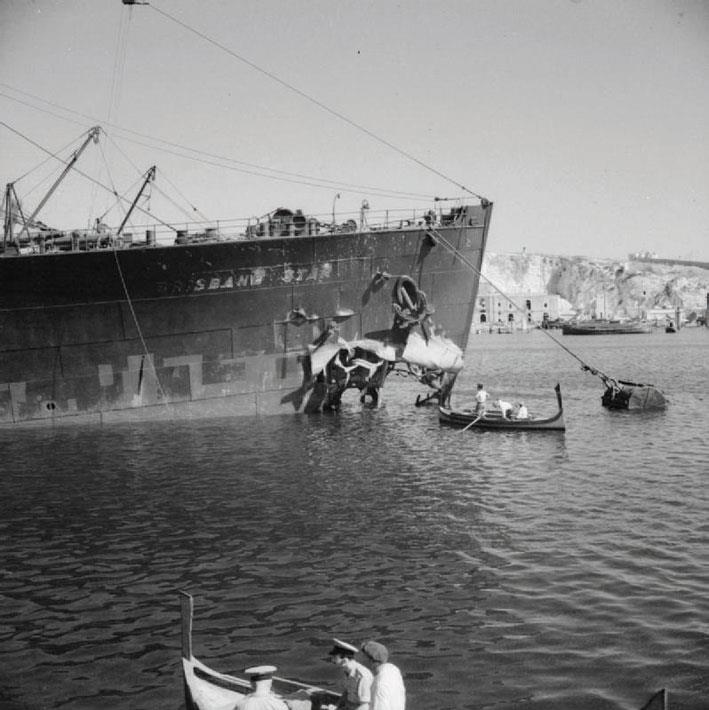
Torpedo damage on the Brisbane Star’s bow
Not everyone was that lucky however, Maurice tells me. He tells me of one Warrant Officer Zahra, who had left to his hometown in Rabat for his 24 hour leave. Zahra was 24 at the time and also married. He told his colleagues that he would be back at the post by 8 o’clock. Twenty minutes before that, the air raid siren sounded and Italian planes came over towards Ta’ Qali airfield. Due to the accurate fire that their gun positions were dishing out, and the Italians not being particularly known for their willingness under fire; some planes left their bombs before they got to the airfield. This came to the detriment of Zahra, who was surrounded by bombs and severely injured. He died some hours later at the Mtarfa hospital. Furthermore, Maurice tells me that he couldn’t even attend his friend’s funeral as he was the only other officer left to take charge of the gun post. Such were the realities of the war.
Was there any point that you thought of surrender, we asked Maurice. ‘Not particularly, no. I was very young, only 21 [at the time of the Blitz], and that sort of thought doesn’t come to your mind at that age’, he replies. ‘When you’re that age and you have to defend your country, you don’t think twice of it’, he continues, ‘we were lucky...very lucky’. Like Maurice, there were thousands of other youths who took up the call to defend Malta in this time of war. A lot of these youths, and indeed other civilians, did not experience the same luck that Maurice and his colleagues did. Thousands of military personnel; be they in the army, air force or navy, sacrificed their lives in the defence of the Maltese islands whilst over a thousand civilians also perished during the bombings. The commemoration of the arrival of Operation Pedestal is not simply a commemoration of a convoy, it is a commemoration of all those who held strong in the face of adversity, and those who gave their lives in the defence of their homeland to make sure that Malta remained what it was; the ‘unsinkable aircraft carrier’ in the fight against the tyranny of fascism.
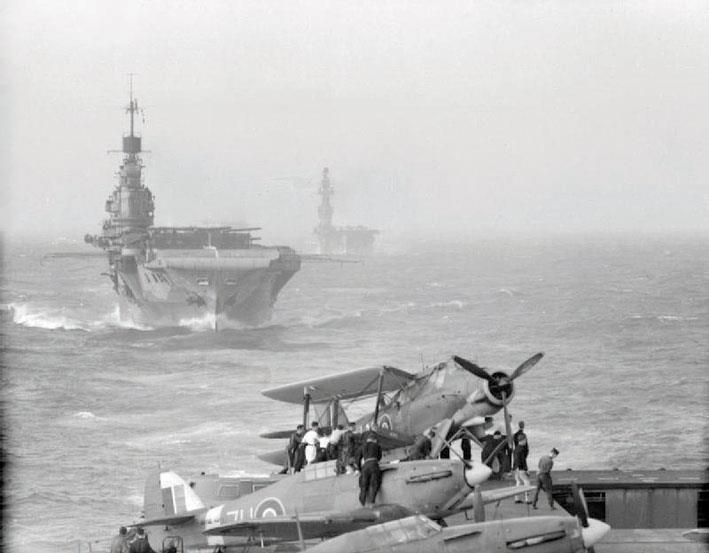
Seen from the flight deck of HMS Victorious, a Fairey Albacore takes off from HMS Indomitable, while HMS Eagle brings up the rear. Eagle was lost during the operation.